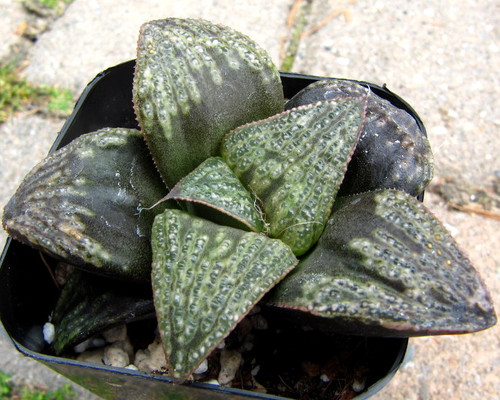Pot Size: 2.5"
Accepted Scientific Name: Echinopsis hybrid (light pink flower)
Origin and Habitat:
This Echinopsis hybrid descends from species native to South America, particularly Argentina, Bolivia, and Peru. In their natural habitats, Echinopsis species grow in semi-arid grasslands and rocky foothills where temperatures fluctuate widely between day and night. These regions feature porous, mineral soils with excellent drainage and sparse but seasonal rainfall. Hybrids such as this one have been selectively bred for their large, showy blooms and compact, easily cultivated growth habit, while retaining the hardiness of their wild ancestors.
Description:
This Echinopsis hybrid forms a small, globular to short-columnar body up to 4–6 inches (10–15 cm) tall and 3–4 inches (8–10 cm) wide. The deep green stem has 10–12 ribs lined with small areoles bearing short, white to yellowish spines. In late spring to summer, it produces spectacular, trumpet-shaped flowers in soft pastel pink tones, often with a white throat. The blooms can reach 5–7 inches (12–18 cm) across and open in the evening, lasting for a day or two. The contrast between the green body and delicate pink flowers gives this hybrid exceptional ornamental appeal.
Cultivation:
Zone: 9–11
Temperature: Best between 10–30°C; protect from frost below 5°C.
Growth Rate: Moderate to fast under warm, bright conditions.
Soil: Use a well-draining mix of pumice, perlite, and coarse loam to prevent root rot.
Watering: Water thoroughly during the growing season, allowing the soil to dry between waterings; keep nearly dry in winter.
Fertilizing: Feed with a diluted cactus fertilizer every 2–3 weeks in spring and summer.
Light: Requires full sun to bright light for best flowering and compact growth; provide some afternoon shade in very hot climates.
Pests and Diseases: May be affected by mealybugs or spider mites. Root rot can occur in poorly drained or overly wet soil.
Propagation:
Easily propagated by offsets or from seeds. Offsets can be detached once mature and replanted in a dry, well-draining mix after callusing.







